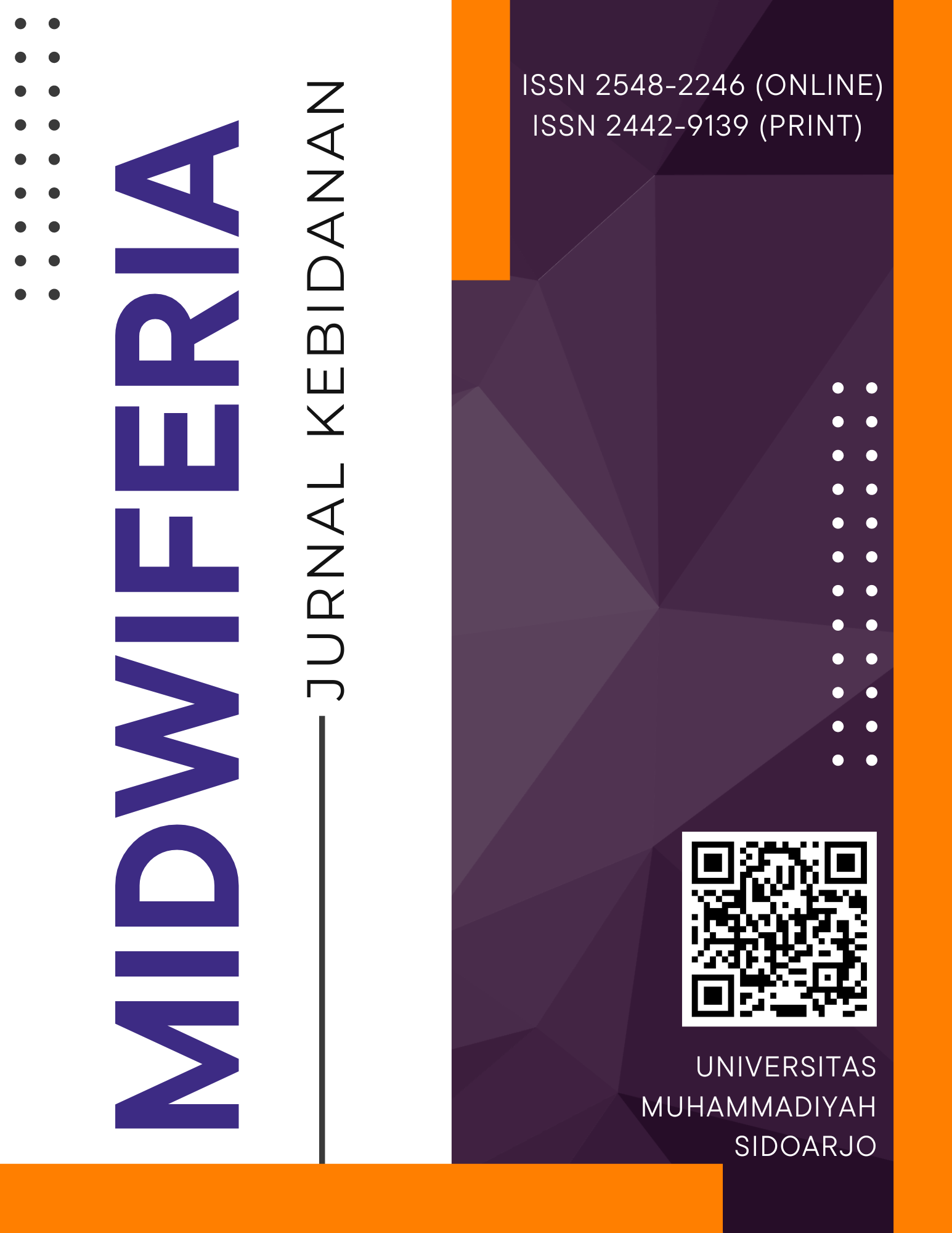Analysis of the Relationship Between Parenting Patterns and Supplementary Feeding on Stunting Incidence in Gedungboyountung Village
DOI:
https://doi.org/10.21070/midwiferia.v11i2.1749Keywords:
stunting, parenting, supplementary feeding, toddlersAbstract
Stunting is a persistent public health problem in Indonesia, particularly in rural communities, and is influenced by caregiving practices and dietary patterns. This study aimed to analyze the association between parenting practices, supplementary feeding (PMT), and the incidence of stunting among children aged 6–59 months in Gedungboyountung Village. A cross-sectional analytic design was conducted from June to August 2025 with 60 respondents selected through purposive sampling. Parenting and feeding practices were assessed using structured questionnaires, while stunting was determined based on height-for-age z-scores. Data were analyzed using the Chi-square test. The findings showed that 8.3% (5 children) were stunted. A significant association was observed between parenting practices and stunting (p = 0.028), indicating that children raised with poor parenting were more likely to be stunted. Supplementary feeding was also significantly associated with stunting (p = 0.014), with inappropriate or low-quality feeding practices increasing the risk of growth faltering. These results suggest that stunting in rural areas is strongly linked to behavioral and caregiving factors, especially the adequacy of food provision and the quality of parenting. Strengthening community-based health education programs to improve parenting skills and ensure appropriate supplementary feeding may serve as effective strategies to reduce stunting prevalence. Further studies with larger sample sizes and longitudinal approaches are recommended to confirm these findings and to explore additional determinants such as socioeconomic conditions, maternal education, and sanitation.
References
A’ini, S., Susanti, N., & Agustina, D. (2024). Analysis of the Influence of Parenting on the Incidence of Stunting in Toddlers. Indonesian Journal of Global Health Research, 6(3), 1675–1686.
Amilia, F., Masrul, M., Yusrawati, Y., Lipoeto, N. I., Mariko, R., & Meinapuri, M. (2025). Analysis of Risk Factors of Parenting Patterns using the Nurturing Care Framework Approach with the Incident of Stunting in Toddlers in a Case Study in the Working Area of Pagambiran Public Health Center. Journal La Medihealtico, 6(5), 1153–1172. https://doi.org/10.37899/journallamedihealtico.v6i5.2532
Aprianti, R. (2023). The Relationship Between Parenting and Feeding Patterns On The Incidence Of Stunting. Jurnal EduHealth, 14(3), 1225–1229. https://doi.org/10.54209/jurnaleduhealth.v14i3.2494
Ka’bah, & Yuliana, R. (2024). Scientific Journal of Pediatrics. Scientific Journal of Pediatrics, 65. https://doi.org/10.59345/sjped.v2i1.96
Lubis, A. S., & Lubis, B. (2023). Relationship Between Mother Characteristics and Parental Feeding Style with Stunting Incidence in Children Under Children. Jurnal Kebidanan Kestra (Jkk), 5(2), 173–177. https://doi.org/10.35451/jkk.v5i2.1514
Meku, F. X., & Hambur, S. G. (2025). Relationship Between Parenting Style and Food Consumption Patterns and the Incidence of Stunting in Toddlers Aged 24 – 60 Months in the X Community Health Center Area. Dunia Keperawatan: Jurnal Keperawatan Dan Kesehatan, 13(2). https://doi.org/10.20527/dk.v13i2.785
Muthoharoh, H. (2021). Pengaruh ASI Eksklusif dan Susu Formula terhadap Berat Badan BayiNo Title. Jurnal Manarang, 7.
Ritanti, R., & Evanda, S. (2025). The Relationship between Feeding Parenting and Maternal Self-Efficacy with the Incidence of Stunting in Toddlers. Jurnal Ilmu Dan Teknologi Kesehatan, 12(2), 156–162. https://doi.org/10.32668/jitek.v12i2.1892
Sari, W. P., & Maigoda, T. C. (2023). Hubungan Pola Asuh, ASI Eksklusif dan Kualitas MP-ASI dengan Kejadian Stunting pada Balita Usia 6-12 Bulan. Jurnal Proteksi Kesehatan, 12(2), 201–207.
Septriliyana, R. N., & Aryanti, D. (2022). Science Midwifery The realtionship between feeding patterns and stunting incidence in toddlers aged 0-24 months at the Cicangkang Girang Primary Health Care. Science Midwifery, 10(5), 2721–9453. www.midwifery.iocspublisher.orgjournalhomepage:www.midwifery.iocspublisher.org
Sulikah, S., Arini, T., Wisnu, N., & Ahmad, A. (2024). Determining the Relationship Between Feeding Patterns and Stunting Incidence in Children: A Cross-Sectional Study in Magetan, Indonesia. International Journal of Advanced Health Science and Technology, 4(3), 86–92. https://doi.org/10.35882/ijahst.v4i3.318
Susanti, D. (2024). Hubungan Pola Asuh Ibu dengan Kejadian Stunting pada Balita di Desa Manarap Kecamatan Danau Panggang. Rawa Sains: Jurnal Sains STIPER Amuntai, 14(1). https://rawasains.stiperamuntai.ac.id/rs/index.php/rs
Virginia, A., Maryanto, S., & Anugrah, R. M. (2020). the Correlation Between Complementary Feeding and First Complementary Feeding Time With Stunting in Children of 6-24 Months in Leyangan Village, East Ungaran, Semarang Regency. Jgk, 12(27).
Downloads
Published
License
Copyright (c) 2025 Siti Sholikha, Husnul Muthoharoh, Dellamitha Arifiah Muslim, Hibatun Mubarokah El Fitri

This work is licensed under a Creative Commons Attribution 4.0 International License.






